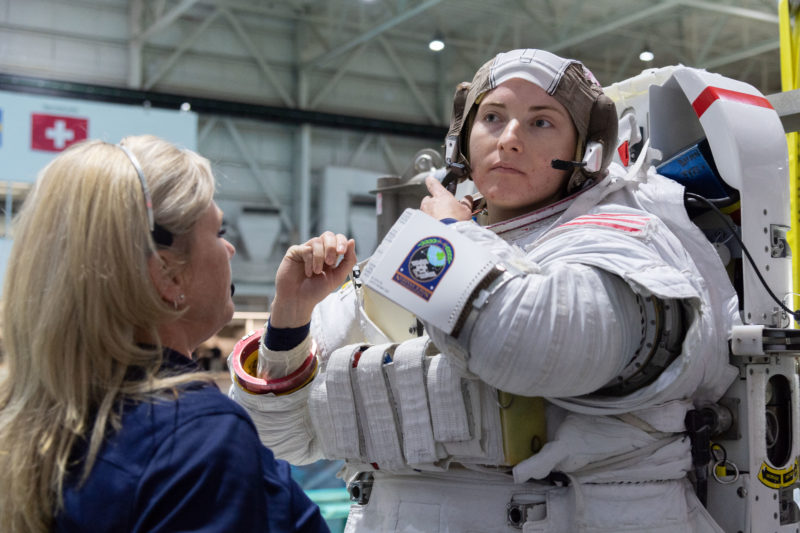
Monday’s announcement by NASA that “Artemis Team” member Kayla Barron will fill the fourth and final seat aboard the Crew-3 mission later this fall produces an unusual combination of records for the next U.S. piloted voyage to the International Space Station (ISS).
With the addition of Barron—a U.S. Navy lieutenant-commander and the first female submarine warfare officer ever hired into NASA’s Astronaut Corps—the Crew Dragon will deliver both the oldest and youngest long-duration personnel to the sprawling multi-national orbital outpost, as well as the first American in four decades to command a mission on his first space voyage. Launch atop a SpaceX Falcon 9 booster from historic Pad 39A at the Kennedy Space Center (KSC) in Florida is targeted for no sooner than 23 October.
Monday’s announcement was not unexpected, having received much speculation in recent weeks and even the appearance of Crew-3 mission patches, bearing Barron’s name. But until then, there had emerged no official confirmation from the space agency itself. “Excited @Astro_Kayla joining @astro_matthias, @AstroMarshburn & me on @NASA #Crew3 msn,” tweeted Chari on Monday. “To go to @Space_Station w/a wonderful person, friend & classmate makes me look forward to the flight even more.”
Last December, the first three members of Crew-3 were formally revealed. Commanding the mission will be Air Force Col. Raja Chari, joined by physician Tom Marshburn and German physicist Matthias Maurer of the European Space Agency (ESA). Although Marshburn has flown before—aboard shuttle Endeavour’s STS-127 mission in July 2009 and as a long-duration ISS crewman on Expeditions 34/35 from December 2012 through May 2013—both Chari and Maurer will be making their first spaceflights.
Chari and Barron will thus become the first members of NASA’s 2017 astronaut class to fly into space. Both were also picked last fall as members of the “Artemis Team”, with high hopes that they may draw future assignment to one of the next human voyages to the Moon. In commanding his very first mission, Chari joins an exclusive club of only six Americans to achieve this milestone.
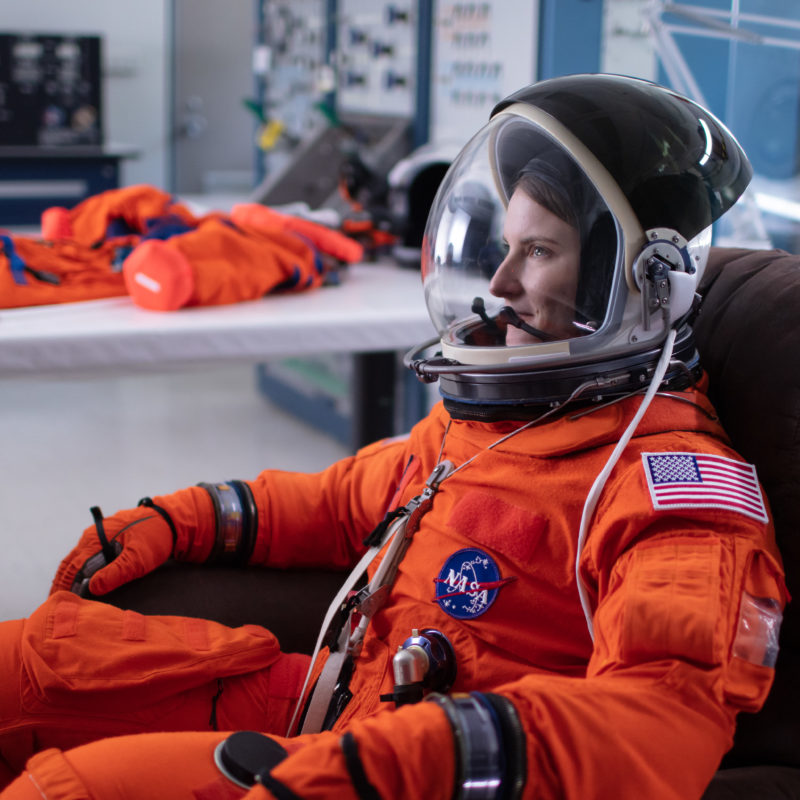
Upon completion of Astronaut Candidate (ASCAN) training in January 2020, he was initially detailed to the Vehicle Integration and Test Office (VITO), with Barron assigned to follow the development of the Exploration Extravehicular Mobility Unit (xEMU), the space suit for NASA’s future lunar and deep-space missions.
In commanding his first mission, Chari follows in the footsteps of Jim McDivitt, who led Gemini IV—America’s first flight to involve a session of Extravehicular Activity (EVA)—way back in June 1965. Others included veteran X-15 and shuttle commander Joe Engle and the skipper of the final Skylab crew, Jerry Carr, who died last summer.
And with Chari already selected as a member of the Artemis Team, a close link cannot fail to be missed with America’s two other first-time commanders: Frank Borman, who led Apollo 8, the first crewed voyage to the Moon, and Neil Armstrong, who took the initial historic footsteps on its dusty surface at the Sea of Tranquility.
And with Barron due to turn 34 years old in September and Marshburn set to pass his 61st birthday in August, Crew-3 will also mark the youngest and oldest people ever to fly a long-duration expedition to the ISS. Barron will narrowly eclipse Russia’s Ivan Vagner, who was three months shy of his 35th birthday when he launched aboard Soyuz MS-16 in April 2020, whilst Marshburn exceeds the achievement of veteran cosmonaut Pavel Vinogradov, who turned 60 in August 2013, during his Expedition 35/36 increment.
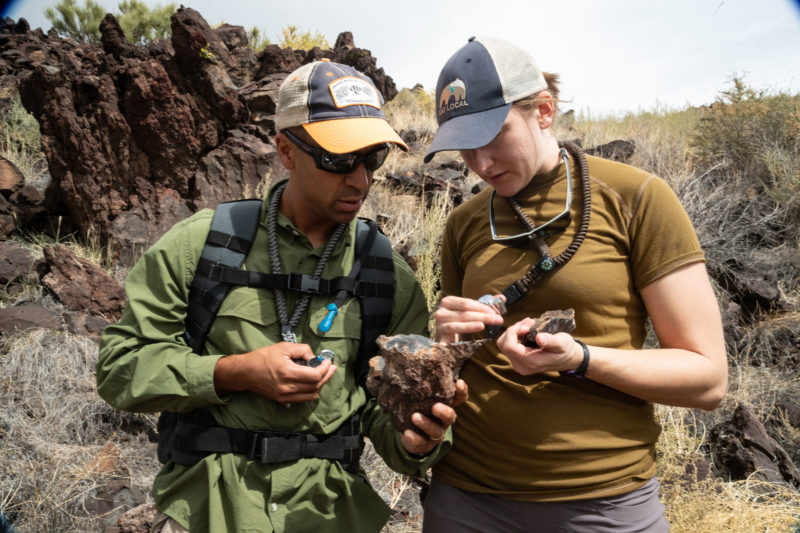
Most recently, Marshburn backed up fellow astronauts Drew Morgan and Jessica Meir for their respective ISS increments, launched in July and September 2019. And Maurer was assigned last summer to backup Crew-2 astronaut Thomas Pesquet, before formally joining the Crew-3 team in December.
The fourth seat on the mission remained a mystery for several months, with speculation as to whether a Russian cosmonaut or a U.S. astronaut might snare it. Last month, NASA Acting Administrator Steve Jurczyk told reporters that draft agreements between the space agency and Russia were awaiting final approval by the State Department, but that the clock had likely run out to assign, train and provide a space suit for a cosmonaut in time for Crew-3.
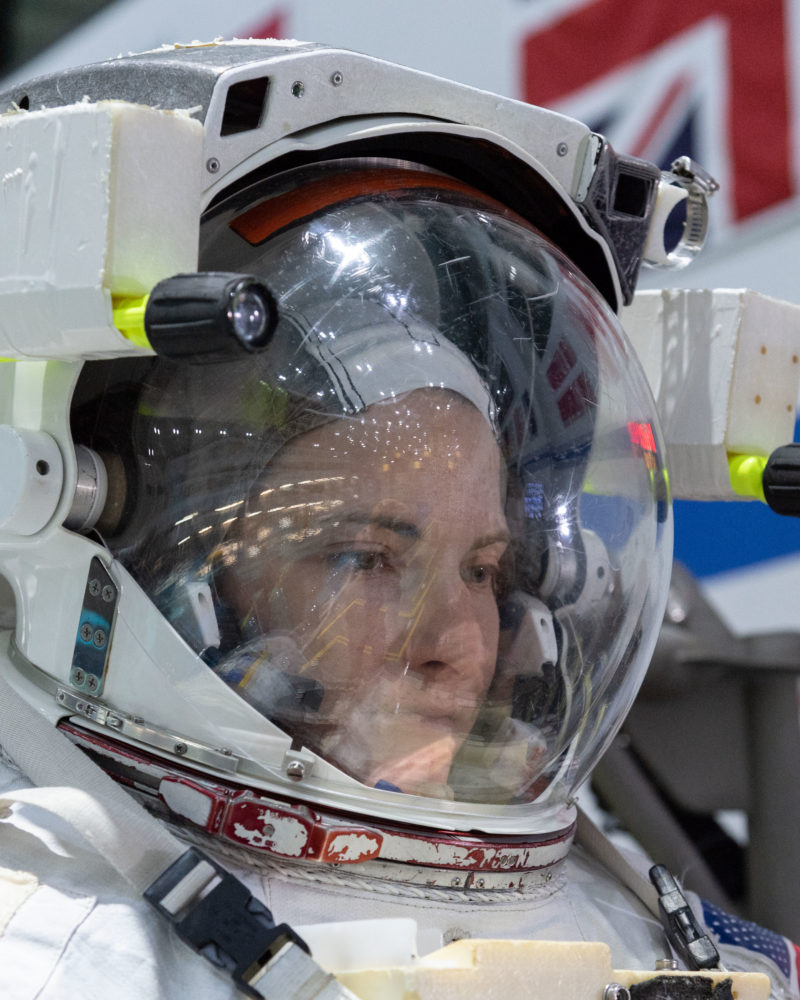
With Barron’s name now confirmed, an ambitious mission lies ahead. Set to launch from historic Pad 39A no sooner than 23 October, NASA noted that Chari, Marshburn, Maurer and Barron will fly a full six-month science mission, producing a return to Earth around April 2022. This increases the likelihood that the next U.S. crew change—possibly the SpaceX Crew-4 mission—may correspondingly move from its previous “placeholder” date of No Earlier Than (NET) February 2022 to around April, to create a similar “direct handover” as was seen last month during the swap of Crew-1/Crew-2 personnel.
A launch on 23 October will produce a docking at International Docking Adapter (IDA)-2, on the forward-facing port of the Harmony node, about a day later. The Crew-3 astronauts will be welcomed aboard the station by Expedition 66 Commander Thomas Pesquet of France and his six crewmates.
Veteran cosmonaut Anton Shkaplerov is due to arrive aboard Soyuz MS-19 in early October, alongside film director Klim Shipenko and actress Yulia Peresild, of whom the latter pair are participating in a made-in-space movie for Russia’s Channel 1, named “Challenge”. Shipenko and Peresild will return to Earth after about a week aboard Soyuz MS-18, shoulder-to-shoulder with cosmonaut Oleg Novitsky, who will wrap up six months in space.
And the recent confirmation of Shipenko and Peresild’s names makes it increasingly probable U.S. astronaut Mark Vande Hei and Russia’s Pyotr Dubrov—who flew to the ISS with Novitsky in April—may fly a double-length increment, remaining aboard the station until late March 2022. If this comes to pass, it will make them only the third and fourth humans to approach a full consecutive year in orbit on the ISS.
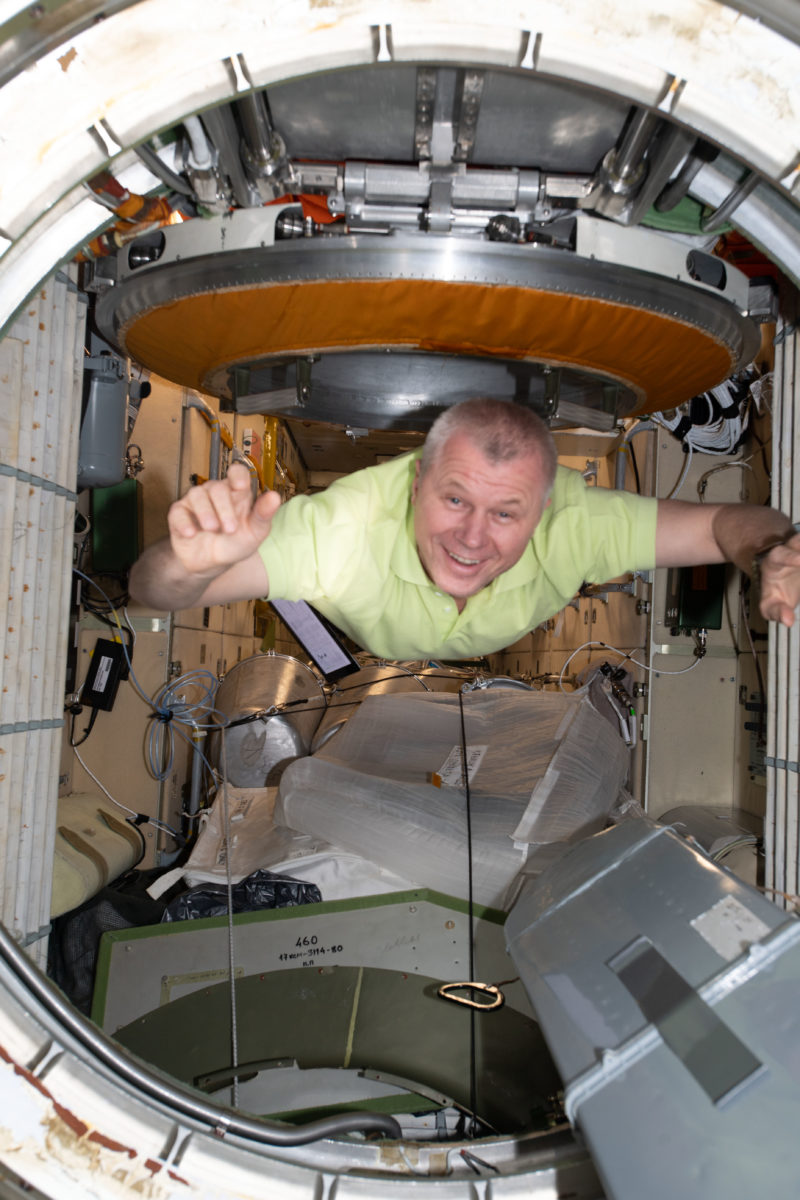
Alongside the seven-strong Expedition 66 team, the arrival of Chari, Marshburn, Maurer and Barron will push the ISS population up to 11 people for a few days, until Crew-2 astronauts Shane Kimbrough, Megan McArthur, Aki Hoshide and Pesquet himself return home in late October. It remains to be seen who will pick up command of Expedition 66 with the departure of Pesquet.
But as the ISS moves through the final weeks of 2021 and into the spring of 2022, the pace of visitors—crewed and uncrewed—is expected to increase. Soyuz MS-20 in December will fly a short mission, which is expected to include a pair of Spaceflight Participants (SFPs) and veteran cosmonaut Aleksandr Misurkin, whilst AxiomSpace’s historic Ax-1 mission is targeted to launch no earlier than January 2022, with a four-man crew led by former NASA astronaut and America’s most experienced spacewalker Mike Lopez-Alegria.
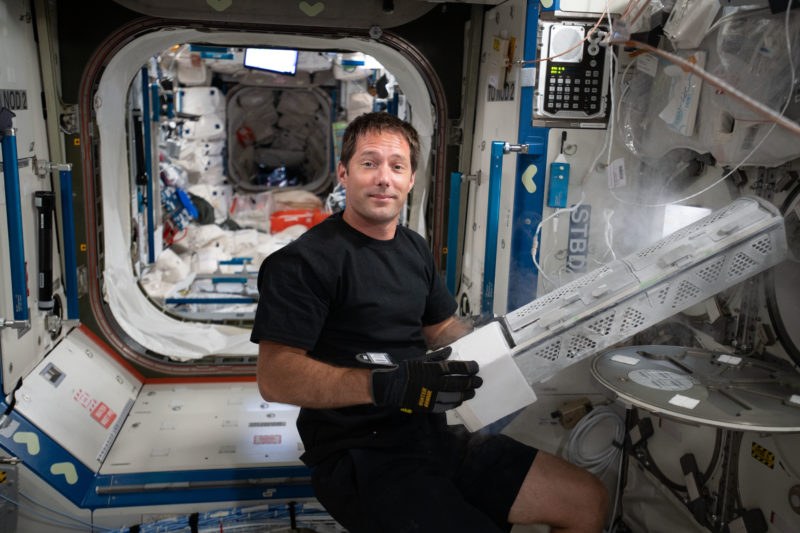
Added to this list, Chari, Marshburn, Maurer and Barron will see the arrival of two Northrop Grumman Corp. Cygnus and two SpaceX Dragon cargo ships, three Russian Progresses and the arrival in March 2022 of Soyuz MS-21. The departure of Soyuz MS-20 a few days later—likely crewed by Shkaplerov, Dubrov and Vande Hei—will mark the official end of Expedition 66 and the start of Expedition 67.
And although a definitive launch date remains elusive at present, the Crew-3 astronauts may also be aboard the ISS for the arrival of Barry “Butch” Wilmore, Nicole Mann and Mike Fincke on the long-awaited Crew Flight Test (CFT) of Boeing’s CST-100 Starliner.




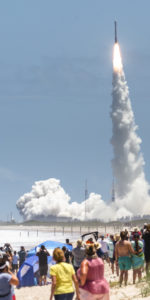
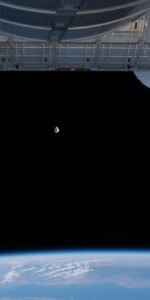
8 Comments
8 Pings & Trackbacks
Pingback:SpaceX, ULA Primed for Five Launches in June, CRS-22 Dragon Set to Fly Thursday
Pingback:SpaceX Launches CRS-22 Dragon to Space Station, Gears Up for SXM-8 Mission at Weekend « AmericaSpace
Pingback:Crew-3 Discusses Upcoming Mission, Names New Dragon ‘Endurance’ « AmericaSpace
Pingback:Crew-3 Discusses Upcoming Mission, Names New Dragon ‘Endurance’
Pingback:Crew-3 Discusses Upcoming Mission, Names New Dragon ‘Endurance’ « AmericaSpace - Technology News
Pingback:Crew-3 Aims for NET Saturday Launch, Daylong Trek to Space Station – AmericaSpace
Pingback:Crew-3 Goals for NET Saturday Launch, Daylong Trek to House Station – AmericaSpace - Technology News
Pingback:Crew-3 Launches, Heads for Thursday Space Station Docking – AmericaSpace